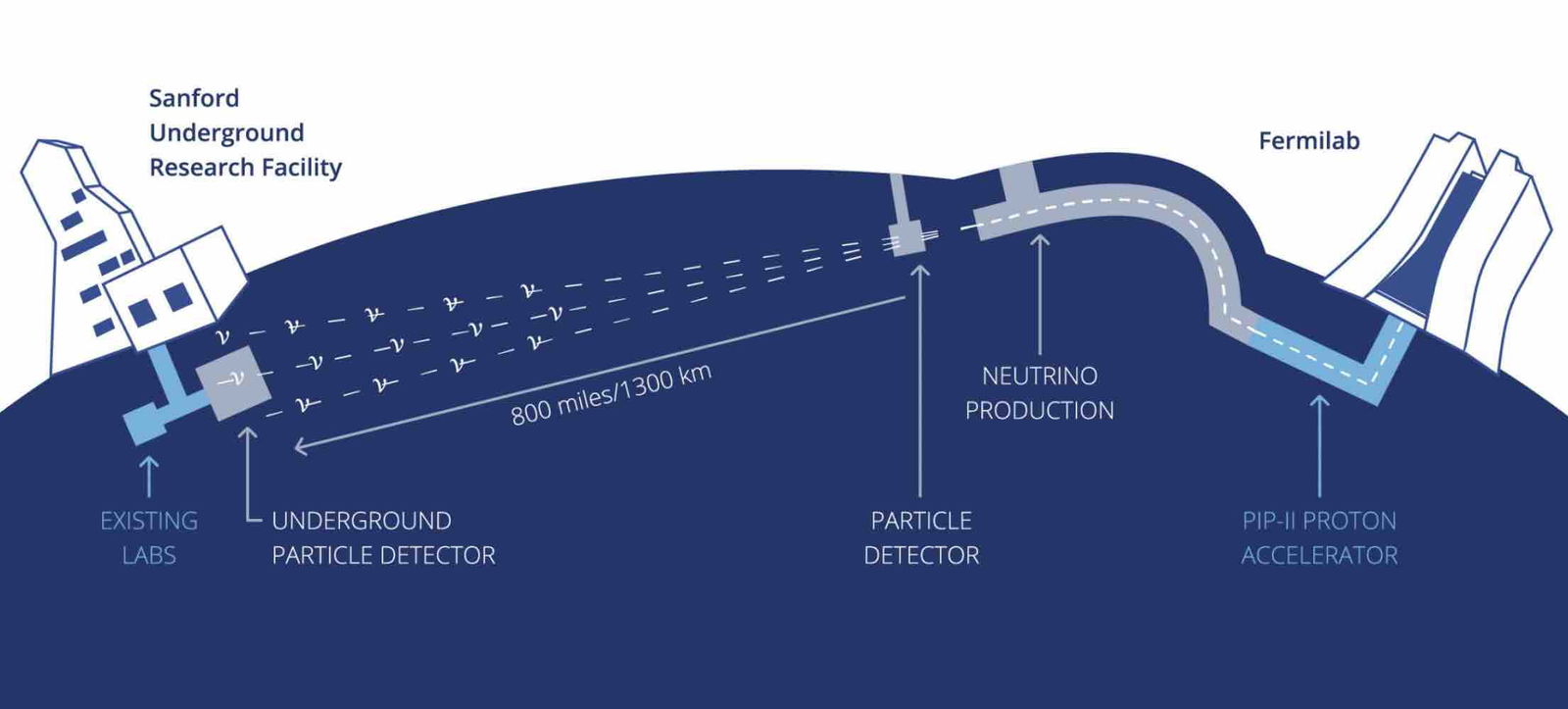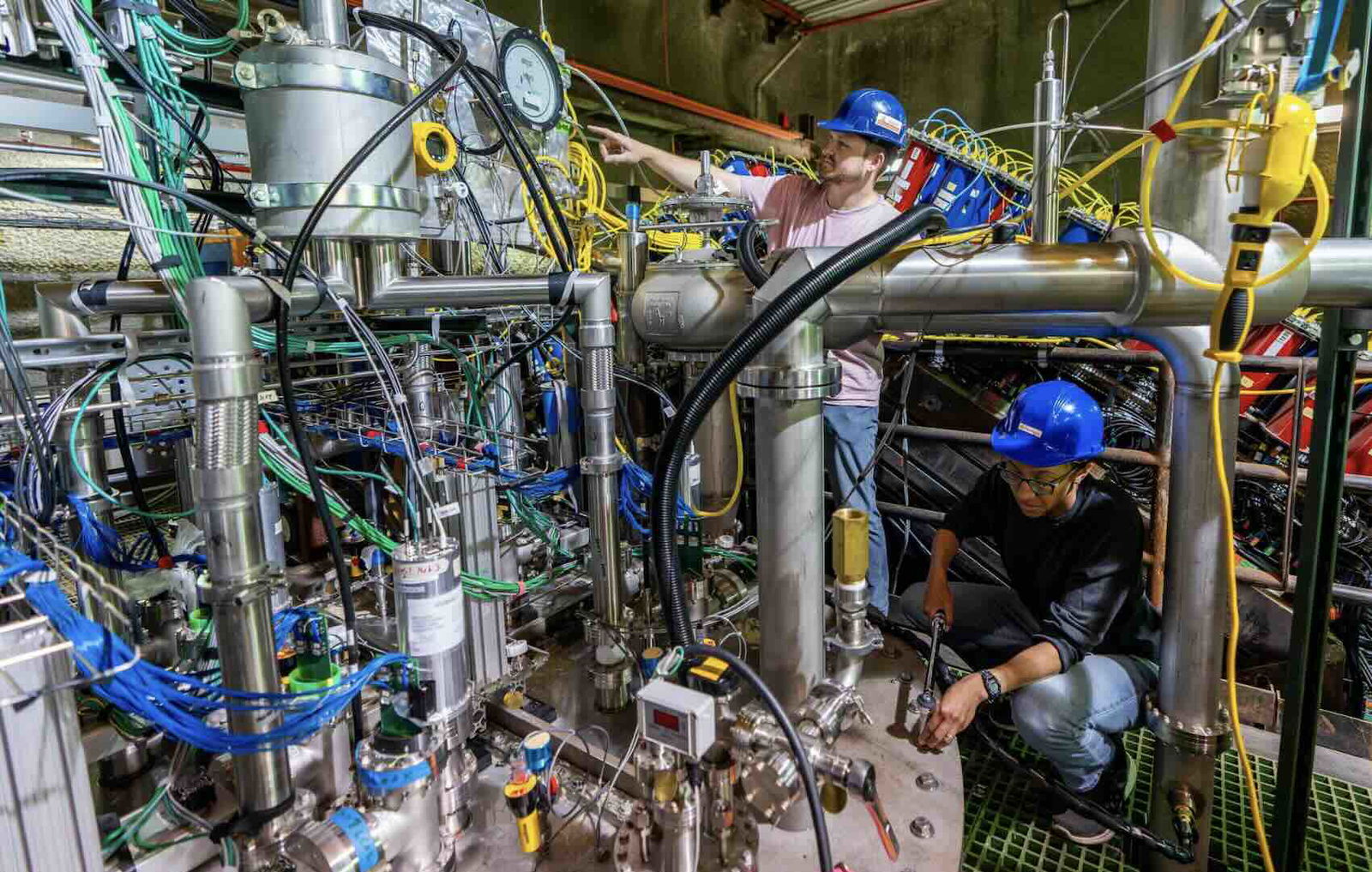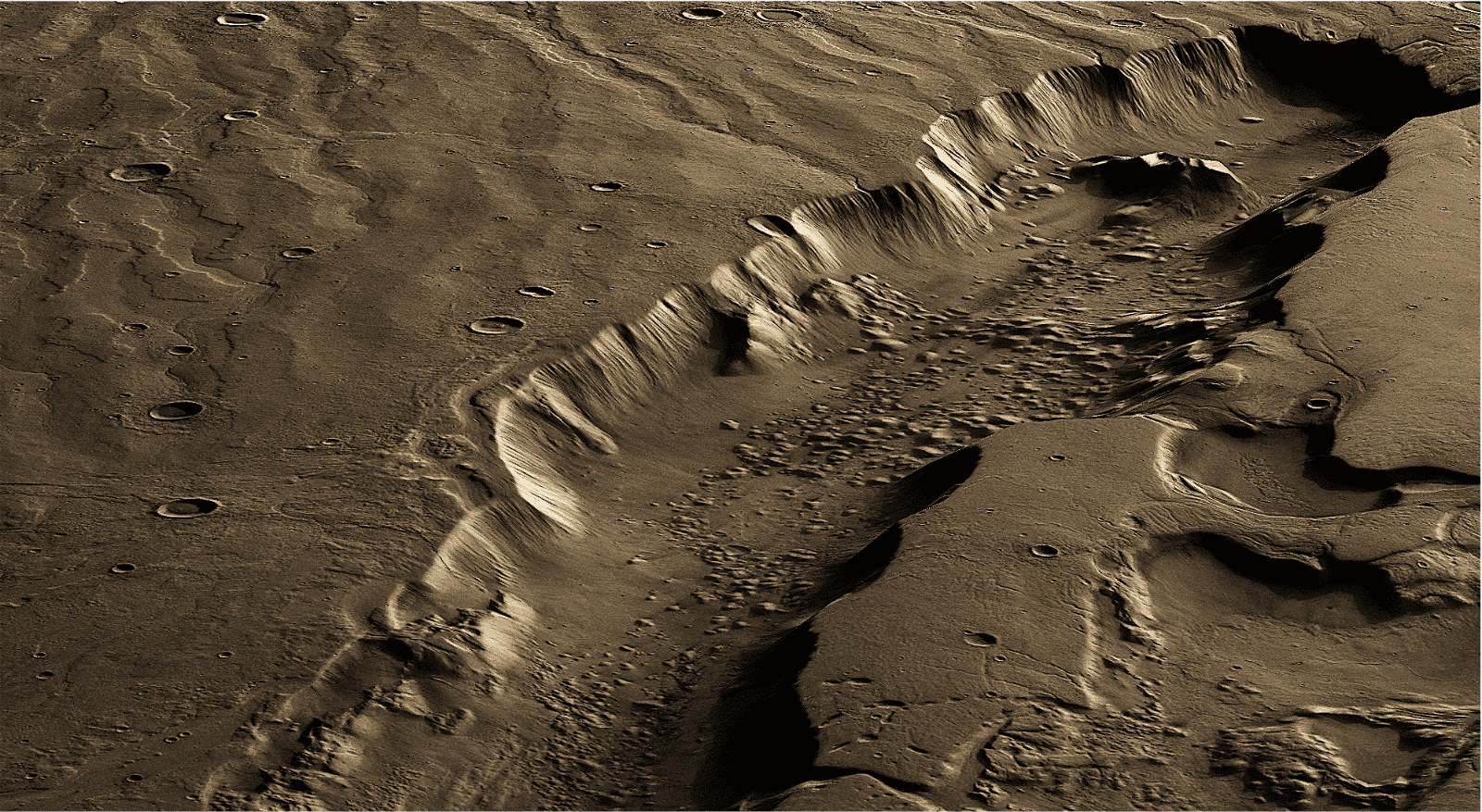Scientists with the Deep Underground Neutrino Experiment (DUNE) are now reporting the first successful neutrino detections using a novel prototype particle detector.
One of the most ambitious experiments involving neutrinos ever performed, the achievement marks a significant breakthrough for the prototype system located at the U.S. Department of Energy’s Fermi National Accelerator Laboratory (Fermilab). The prototype’s successful testing will pave the way toward the full realization of the DUNE program, which aims to solve mysteries that include why there is less antimatter than normal matter in our universe.
The announcement follows similar discoveries like those recently announced by the Forward Search Experiment (FASER) at CERN’s Large Hadron Collider (LHC), which led to the first successful detection of electron and muon neutrinos at never-before-seen energy ranges.
Mysterious “Ghost Particles”
Neutrinos are some of the most intriguing targets of research in modern physics. One reason for this is that these neutral subatomic particles hold an important place in the Standard Model of particle physics; although they are extremely abundant across the universe, their elusive nature—interacting very rarely with matter—has earned them the nickname “ghost particles.”
For particle physicists, unraveling the mysteries of these rare neutrino interactions is key to deepening our understanding of the universe. Such insights could potentially answer fundamental questions, including the origins of mass and the dominance of matter over antimatter, as well as what processes underly phenomena like black hole formation and supernovae.
The DUNE experiment, which is still under construction, will incorporate state-of-the-art technologies to allow particle physicists an unprecedented opportunity to study nature’s most elusive particles. In advance of its completion, experiments involving prototype detectors have given scientists an opportunity to conduct tests that will help ensure that the DUNE program, once completed, can achieve optimal functionality.
Earlier this year, the DUNE team began installation of its most recent prototype in the path of one neutrino beamline already in operation at Fermilab. Then, on July 10, the first successful detection of neutrinos using the beam was announced, an achievement that provides crucial validation for the new detector’s function and design.
The Cutting Edge of Neutrino Detection Technology
As a component of the broader plan for the DUNE near detector complex, the current experimental system is nicknamed the 2×2 prototype for its unique design that incorporates a square arrangement consisting of four modules. It works by recording tracks produced by particles with liquid argon time projection chambers.
The prototype is capable of high-precision 3D imaging of neutrino interactions and draws from research conducted at Lawrence Berkeley National Laboratory, also a DOE facility, and institutions like the University of Bern in Switzerland. It also includes a millimeter-sized pixel readout system that produces large-scale neutrino imaging in greater detail.
“This is a truly momentous milestone demonstrating the potential of this technology,” according to Fermilab scientist Louise Suter, who helped direct the installation of the new module. Suter said it was “fantastic to see this validation of the hard work put into designing, building and installing the detector.”
Once its construction is completed, the final version of the DUNE near detector will feature a total of 35 argon modules, which will be larger than the current modules the prototype features. The larger modules on the final version of the detector will greatly help in managing the significant flux of neutrinos that is anticipated to occur at the site.
Right now, initial data collected by the 2×2 prototype is already showing promise for the DUNE detector’s future capabilities. The system’s ability to record and analyze neutrino interactions will offer an unprecedented look at the behavior of these enigmatic particles, including insights into a crucial area of research that involves the difference between neutrino and antineutrino oscillations.
Such insights will ultimately grant scientists a deeper understanding of phenomena, including why there appears to be more matter than antimatter in the universe. This is a longstanding conundrum in physics since, in theory, equal amounts of each should have been produced at the inception of our universe. It is possible that conditions shortly after the Big Bang may have shown more favor for matter over antimatter, although scientists remain unsure about why.
DUNE Moves Toward Operational Status
Once the near detector is completed at Fermilab, where the 2×2 prototype is currently being tested, the neutrino beam used in the experiments will be studied at its greatest intensity, where hundreds of millions of neutrino interactions will be recorded.


However, that isn’t the only component of the DUNE detector. The entire project will be comprised of two separate locations spanning several hundreds of miles, which include the Fermilab facility and the Sanford Underground Research Facility in South Dakota, where particles that have made their way through the Earth will be studied using massive detectors located there. This will allow scientists to study what is known as neutrino oscillation, which may help to shed light on asymmetry known as CP violation, which may be related to the universal imbalance between matter and antimatter.
Right now, the Fermilab team’s tests with the 2×2 prototype play an important role in defining the capabilities of the completed detector, which must be capable of sustaining high rates of interactions between neutrinos and antineutrinos. The 2×2 prototype is currently undergoing testing that includes analyzing the interactions between antineutrinos and argon atoms, which helps the research team gauge the detector’s capabilities prior to going into full operation.
The 2×2 prototype’s successful first detection of neutrinos is an important step toward the full realization of the DUNE project, providing potentially crucial data in advance of its completion. The completed detector will be armed with capabilities that may help to shed light on some of the most perplexing questions scientists have about the cosmos.
“This is an exciting milestone for the 2×2 team and the entire DUNE collaboration,” said Sergio Bertolucci, a professor of physics at the University of Bologna, Italy, and a spokesperson for the DUNE project, in a statement announcing the prototype’s achievement.
“Let this be the first of many neutrino interactions for DUNE,” Bertolucci added.
Micah Hanks is the Editor-in-Chief and Co-Founder of The Debrief. He can be reached by email at micah@thedebrief.org. Follow his work at micahhanks.com and on X: @MicahHanks.

